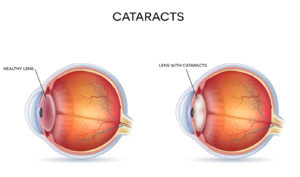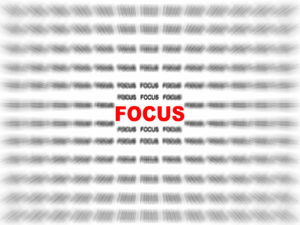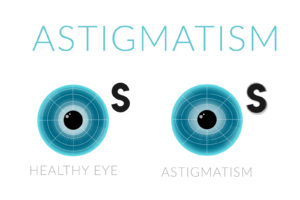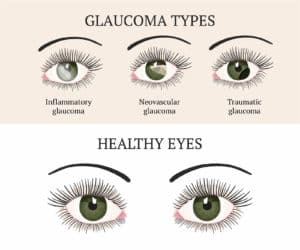
Computer Vision Syndrome 101 – CVS Tips
Carpal Tunnel Syndrome is a now-famous enemy of the modern workforce. However, there’s another contender running for first place. If you haven’t yet heard of Computer Vision Syndrome (CVS) or digital eye strain, you soon will. And if you’re here because you suffer from the rising issue, we have the CVS tips you’re looking for!
Although less severe than Carpal Tunnel Syndrome, CVS is the most common computer-related injury today. As defined by the American Optometric Association, CVS is a complex of vision problems related to computer use. Some symptoms of this newer syndrome include blurred vision problems, neck or shoulder pains, headaches, and eyestrain. That’s why you might feel really tired after a long day of working on your computer.
 Are you one of the many workers out there suffering from symptoms like these? You may be wondering what you can do about them. Though there isn’t a magic pill that will cure you of Computer Vision Syndrome, there are some things you can do to improve your symptoms.
Are you one of the many workers out there suffering from symptoms like these? You may be wondering what you can do about them. Though there isn’t a magic pill that will cure you of Computer Vision Syndrome, there are some things you can do to improve your symptoms.
In this post, we’ll go over some CVS tips you can try.
CVS Tips to Stop the Suffering:
1) Monitor Your Monitor
Simply changing the position of your monitor can help you avoid some of the uncomfortable muscle strains. You can prevent the awkward eye or head movements that are associated with CVS.
Your monitor should be directly in front of your eyes, at a distance of 20 to 26 inches. The very top of your monitor’s case should be level with your eyes. Look down on to the actual screen in a way similar to reading books.
Try adjusting your monitor by tilting it slightly back until you find a natural and comfortable position. Perhaps you are reading paper documents as well as reading computerized documents. Be sure that your paper documents are at a similar angle as your computer screen to make life a bit easier on your tired eyes.
You can buy document holders to attach to your monitor at most office supplies stores. Also, many employers will provide ergonomic equipment if employees ask for them. They could give you an adjusting-monitor, a monitor stand, and a lumbar pillow for posture. Employers should want their employees to produce good work. However, that’s hard to do when you’re in pain from CVS.
2) Beware of the Glare
Your office lighting might be harming your eyes. Do you have a heavy glare in your office? Try finding where it’s coming from. It might be a window, a skylight, a shiny mirror, or someone else’s computer screen.
Once you’ve identified the offending glare, take steps to get rid of it. Get some blinds, move your desk, or buy a glare-reducing screen for your monitor.
Try turning down the overhead lights if you can. Adjust the brightness on your computer screen. Aim to reduce the imbalance between the lighting in your room and the brightness of your computer monitor. Lastly, be sure your computer monitor is clean. Staring at a computer screen that’s dirty makes even more work for your eyes! Make screen cleaning a normal part of your weekly routine. Use a professional cleaning product or make your own.
3) Schedule an Eye Vacation
We know all too well how easy it is to lose track of time when you’re working. That expression that goes something like, “you’ve got your eyes glued to it” rings true for many people during their workdays.
Start paying attention to how long you’ve had your eyes glued to your screen. Take notice of how often you take an eye-break. Not too often, right? Start scheduling yourself some time every hour to unglue your eyes and look around the room. Close your eyes and rest. Blink. Try following the 10-10-10 Rule. Every 10 minutes, stop looking at the screen. Spend 10 seconds staring at something 10 feet away. This could be a tree outside or art on the opposite wall. Take time to scan the object you’re looking at in the distance. Trace its perimeter with your eyes without moving your neck and head.
Consider setting a gentle reminder on your phone. It’s unlikely that you’ll remember on your own to rest your eyes! Every 10 minutes or so, give them a break.
4) Computer Users with Higher Needs
Seniors and small children are both at greater risk of developing Computer Vision Syndrome. Seniors should make sure that their workstations are set up to maximize their eye comfort. They should ensure they’ve reduced their exposure to glare as much as possible.
Workers over the age of 50, according to the American Optometric Association, actually require twice as much light as younger workers!
How many times has your son or daughter hopped on the computer after you were done with it? Small children share computers with adults and can easily injure their eyes by using monitors in poor positions. The ergonomics for adults are different than the ergonomics for children.
Parents should try and ensure that their children are properly seated at a workstation adjusted for smaller heights. Provide a taller chair or put a booster seat on the chair. Check that the screen is at the right height for their eyes. Parents should also make sure that children take eye vacations and get outside. Children who spend too much time indoors suffer more from vision problems. Being outside forces you to use your distance and up-close vision muscles. Ensure they learn proper computer skills at an early age.
As a final thought, stop squinting and straining to see your computer screen. Adjust your monitor so that you don’t need to. All that squinting and straining can lead to a host of issues related to CVS. Try to keep up with the 10-10-10 Rule when working in front of a computer for long periods of time. These and other eye exercises can reduce the effects of CVS.
If you are experiencing these symptoms, be sure to discuss them with a qualified professional. Implement the CVS tips we’ve listed above and see if they make a difference. No matter how important your computer work is, your vision health takes priority.
Our Rebuild Your Vision Ocu-Plus Formula Contains All 17 Vitamins, Minerals, and Herbal Supplements to Improve Your Eye Health!












My eyesight is really bad and I have CVS. My eyes get blurry and are always tired no matter how much sleep I get. Your story have me hope that my vision may improve so please can you get back to me with the same program your did since I don’t have enough money for the paid ones. thanks.
hi Tyler Sorensen, I receive your letters about vision. Sir I’m 45 , my problem is that I can’t read closely, this means I have (løng sighted) please which food or vegetable will be useing in order to solve the problem. thanks. And I wish you good lock and happy chrismas.
Hi Tyler, with my very strong reading glasses and a through a bit of a squint, I note that the spelling of pERform – at the end of 3) Take a break – is incorrect.
Regards,
Andrew
Thanks Andrew! I have corrected the spelling mistake, great find! Especially with reading glasses AND a squint!
Dear Tyler,
You guide is is really good. within 10 days of use my right eyes power has decreased from -4.25 to 4 only. Also I play a lot of computer games. The 10-10-10 rules and the distant night are good solutions for relaxing and preventing the eyes from damages.
Hi Mohammed,
We love hearing success stories, keep up the great work.
Timely advice for everyone, old and young alike.
These are some useful tips Tyler… thanks.
I’ve found the 10-10-10 rule to be quite effective.